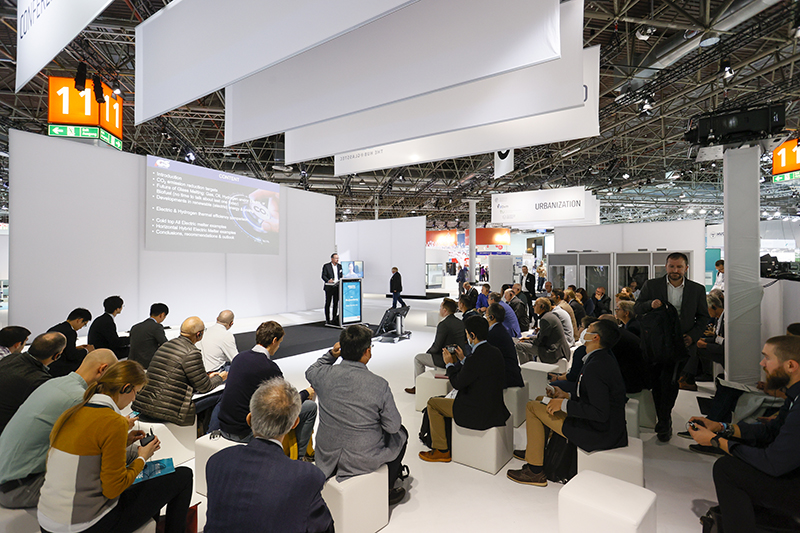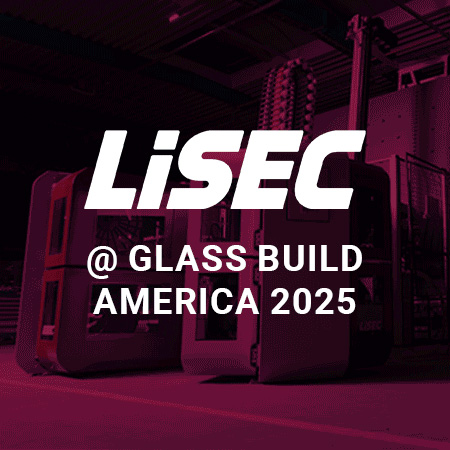Circularity offers opportunities, and raises questions.
Ahead of glasstec, glass industry experts consider reuse and recycling towards a decarbonized economy

The big hot topics of this year’s glasstec, to be held Oct. 21-24 in Düsseldorf, Germany are decarbonization, digitalization and circular economy.
The fact that these trends also determine façade engineering was confirmed by the conversations the author had with two proven experts on behalf of the world-leading trade fair glasstec:
- Prof. Dr.-Ing. Ulrich Knaack, head at the chair of façade structures at the Technical University of Darmstadt and Head at the ‘Design of Construction Chair’ at the TU Delft
- Prof. Dr.-Ing. Linda Hildebrand, Junior Professor for recycling-friendly construction at the Rhenish-Westphalian Technical University Aachen.
For tickets and more information on glasstec 2024, the exhibitor and product database as well as the line-up of programming go to: www.glasstec.de
Alongside the relevance of low-carbon products and façade design for disassembly the two experts forecast a growing market for used construction elements, especially on account of the immediate positive impact this has on resource savings and climate protection.
Building increasingly adapts to the needs that dwindling resources, climate change and the required energy transition bring. In future, digital twins of buildings – covering all steps from the start of their planning, through refurbishment cycles to their end of life and the reintroduction of the raw materials they originally contained into technical cycles – will provide transparent mapping. As a result, only certified sustainable and recyclable products and materials will be eligible for planners’ material selection processes.
Some manufacturers, also in the flat glass industry, have already found ways to reduce their CO2 emissions at manufacturing sites, as well as in upstream and downstream processes, and are starting to offer low-carbon versions (with a smaller carbon footprint) next to their series products.
Once the environmental impacts of these products are proven in an Environmental Product Declaration (EPD), they make it easier to obtain the environmental certification of buildings according to DGNB, LEED or BREEAM.
Prof. Dr.-Ing. Ulrich Knaack, Head at the Chair of Façade Structures at the Technical University Darmstadt sees low-carbon products in façade construction as one of several major trends but issues a proviso: “In the long term, the success will strongly depend on Europe’s transition to green energy and green hydrogen production. However, construction engineers unfortunately only have limited influence on these factors.”
Re-use is scalable, and may result in a materials eBay
Prof. Knaack sees the highest potential in recycling in the long term, and in material re-use in the shorter term. “In both façade construction and refurbishment there is a rising demand for pre-used materials such as glass panes from old buildings because they hold the potential of reducing the carbon footprint of a new and refurbished building even further than would be possible with new products – they save resources and energy. Here, however, you have to weigh up whether the re-use or the recycling of materials makes more sense.”
In cooperation with the Working Party Climate and Sustainability of the German Flat Glass Manufacturers’ Association “Bundesverbandes Flachglas e.V.” Dr. Miriam Schuster currently develops a ranking system for glass sheets from used IGUs at Darmstadt University. The re-use of insulating glass is worthwhile if it features the required mechanical strength and a useful Ug value. If this is not the case, insulating glass units can be split up, disassembled, reworked and made into new IGUs. If, however, the glass sheets have scratches, glass or layer corrosion, defects or damaged edges, it makes more sense to return them to the material cycle as cullet.
Knaack believes that the re-use approach could prove very disruptive, meaning it might have the potential to virtually turn the market upside down. “With re-use you can make immediate progress towards climate neutrality especially when you consider the up-scaling possibilities, which are now in reach thanks to technologies for the automatic separation of existing IGUs that have recently become available. Re-Use could make inroads in many processes and all stages of planning buildings.”
But Knaack also raises unanswered questions: “Who warehouses the IGUs from old buildings and how do they survive demolition in a required quality—not all buildings are fit for careful dismantling. And how much is this glazing really worth? We can expect to see more and bigger platforms emerge over the coming years that collect and offer these valuable raw materials—a kind of Ebay for used construction materials.”
“CircuClarity” for a more transparent circular economy
Prof. Dr.-Ing. Linda Hildebrand, Junior Professor for Recycling-Friendly Construction at the Rhenish Westphalian Technical University Aachen is doing research along the same lines, not only for glass but for all construction materials.
After all, half of all the waste produced in Germany comes from the construction sector and the ‘resource appetite’ is declining too slowly despite more sustainable products. The transition from a linear to a circular building economy is therefore imperative and would have enormous impacts on waste avoidance, climate and resource protection.
A true transformation has not been achieved yet also because the construction sector seems too complex and fragmented to attain a truly profound systemic change quickly. Linda Hildebrand and Lisa Rammig, façade specialists at Eckersley O’Callaghan (EOC), want to bring industry and research closer together with their international initiative CircuClarity.
“In the operating stage of buildings the energy consumption and emissions have already been substantially reduced over the past years, as far as is feasible with the latest technology. This is why the focus is now shifting towards resources and ‘gray energy’,” says Hildebrand and adds: “An ecological building is defined by the properties of its construction materials.”
Many companies design new products today following the ‘design-for-disassembly’ approach. This is also a strong point of façade construction where transom and mullion constructions can easily be disassembled. The re-use or reclamation of systems, components and materials for tomorrow are made easy and part of the planning.
Hildebrand says, “Glass is known in theory to be recyclable an infinite number of times, but we can start at an even earlier point by ‘repowering’ windows, placing glass sheets in front of them and simply leaving them in the built environment.” This is also why Hildebrand focuses on the re-use of used construction components, which—when scaled up—could have a direct, positive effect on climate neutrality.
“Here the major challenges lie in finding the secondary raw materials and managing product and environmental data.” With her B2B company Concular she acts as a broker for pre-used construction elements and consultant for problems related to building demolition. One project serving as a role model is the disassembly project of the solar panel factory Adlershof. The administrative buildings and factory hall were not only disassembled but also re-built one to one in Romania thereby keeping the resources in a closed loop and avoiding emissions for a new building.
Exciting developments will be presented by glasstec on not one but two conference days under the title CircuClarity One, which awaits visitors on Oct. 23-24 at glasstec.


